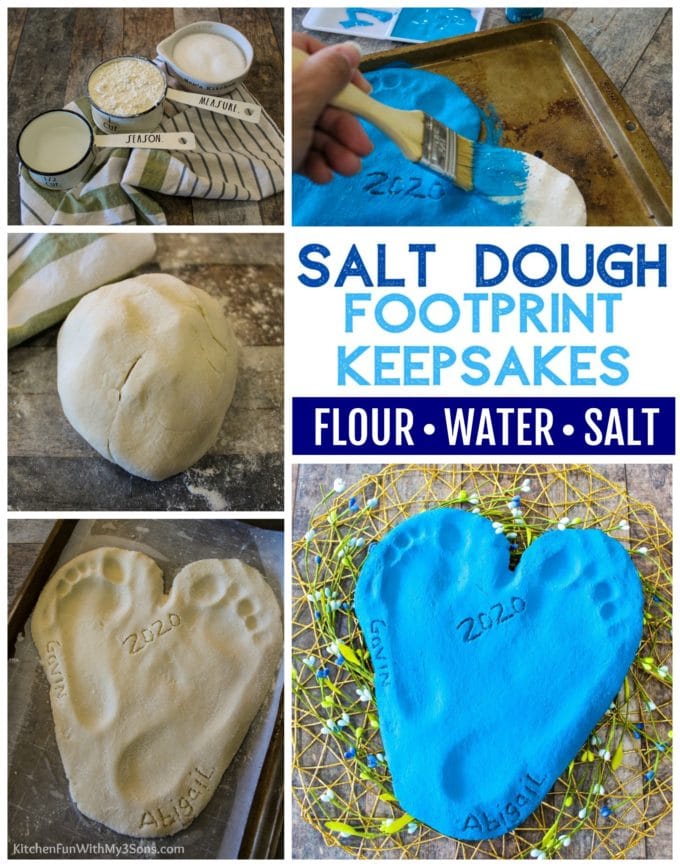
Both self-raising and plain flour are fine for thickening sauces. Heat the oven to 190C Fan 210C regular 375F Gas Mark 6.

But still loads of fun you can still roll it use shape cutters and squidge it between your fingers.
Can you use self raising flour for salt dough. Do not use self rising flour with yeast-raised breads or sourdough. As a general rule you probably do not want to use self rising flour if there is another leavening agent called for in the recipe such as yeast or baking soda. The leavening in the self rising flour should be enough.
There are only 3 ingredients to salt dough flour and salt and then warm water added to create the dough. We recommend Plain All Purpose Flour as if you use self-raising flour it does what it says and rises when its baking. Salt used needs to be finely ground your table salt that you fill the salt.
But still loads of fun you can still roll it use shape cutters and squidge it between your fingers. It will not last as long as other doughs however so enjoy it for a few days while you can. 3 Cups Self Raising Flour 1 Cup Water.
In a large bowl mix the flour and water together. I have prepared the dough for my first attempt at a tartine loaf and have mistakenly used self-raising flour in the sponge and the doughshould I bin it and start again or will it turn out ok. Dont want to waste my time stretching and preparing over the next few hours then baking for it not to turn out right.
You need flour water some oil and a little salt. In addition you can add some lye water or baking soda. Flour is really high in gluten well mix a little bit of it will something that is really low in gluten.
The recipe is 300g total. Baking soda for texture. To substitute self-rising for all-purpose flour look for recipes that use baking powder.
About ½ teaspoon per cup of flour minimum. Our self-rising flour includes both a concentrated form of baking powder and salt. Self-rising flour will work just fine in recipes using about 12 teaspoon and up to 1 teaspoon baking powder per cup of flour.
Both self-raising and plain flour are fine for thickening sauces. Any air bubbles you get from the raising agents in self-raising flour will pop and evaporate as. Self-rising flour is a combination of salt flour and a leavening agent.
While not traditionally used in conjunction with bread machines self-rising flour can be used as a substitute for bread flour. The process of making bread in a bread machine using self-rising flour slightly differs as self-rising flour. Whether youve run out of all-purpose flour or baking powder or youre looking to use up that bag of self-rising that you rarely break into understanding how to make the switch is the key to successfully baking with self-rising flour.
Although it cant be used for delicate flaky baked goods such as pie crusts you can feel free to experiment. How to make self raising flour bread. Step 1 Gather your ingredients.
Heat the oven to 190C Fan 210C regular 375F Gas Mark 6. Put a baking sheet or stone in the oven to heat. Mix the flour and salt in a large bowl.
Step 2 Add the milk and oil and mix the ingredients in the bowl until they come together into a rough dough. Self-rising flour is a kind of flour that already contains salt artificial leavening and baking powder. Self-rising flour may be used to create a kind of bread known as fast bread but it cannot replace yeast in a conventional yeast loaf.
Baking powder and yeast have quite distinct roles. Partly as keeping just one type of flour saves on storage space and partly as if you dont use self-raising flour regularly then it will lose its raising power over time. It is fairly easy to make your own self-raising flour.
Just add 2 teaspoons of baking powder for each 150g6oz1 cup plain flour. Its natural to assume that because self-rising flour eliminates the need for leavening agents in your baked goods that it is a better choice than all-purpose flour for baking. In some cases this is true and self-rising flour is a convenient alternative to regular flour but that is not always the case.
I had some self-raising flour in the cupboard and used 300g of it to start a sourdough starter as per a websites instructions but I later realised that they specified unbleached white flour. My research online has not found a conclusive statement as to whether or not this will work with self-raising white flour.